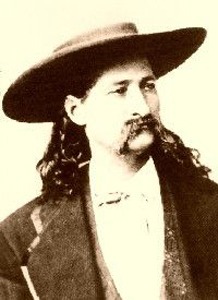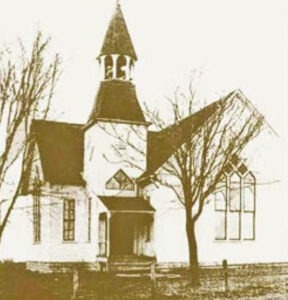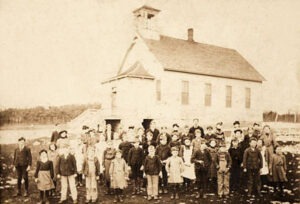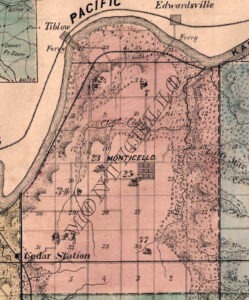
Monticello, Kansas General Store.
Monticello, Kansas, is an extinct town in northern Johnson County. This heavily timbered area was originally home to the Shawnee Indians.
One of the first white farmers in the Monticello area was John Owens, who made his claim along Mill Creek around 1840. In the following years, more settlers flooded into the area, and the Shawnee reservation was dissolved in favor of individual land allotments in May 1844. Many Shawnee moved to a reservation in present-day Oklahoma.
In 1855, the Kansas Territory was broken into counties and townships. The town of Monticello was founded on 160 acres and laid out in June 1857 at the crossing point of the Midland Trail running east-west from Westport, Missouri, to Lawrence, Kansas, and the military road running north-south between Fort Leavenworth and Fort Scott. A town company was formed with Colonel A. Payne serving as President, and W.J. McCarthy as Secretary. The town was named for the historic home of President Thomas Jefferson.
Among those who moved to Monticello that year were C. Brassfield, A.J. Cordray, F.P. Shannon, and J.M. Reed, who would build a large and commodious hotel. Rich & Rively opened the first store, and the first school was located about a mile west of town.
At that time, there were no railroads in the area, but steamboats plied the waters of the Kansas River, often stopping at the nearby Chouteau Ferry Crossing.
On January 15, 1858, a post office was established in Monticello.
One early resident of Monticello Township was none other than James Bu “ler “Wild” Bill” Hickok, who would later obtain fame as a gunfighter, gambler, and lawman. Leaving his home state of Illinois in about 1855, Hickok later made his way to Monticello by the end of 1857. He lived with John Owens on his Mill Creek farm near Monticello. With Owens, he joined the Free-State Army, also known as the Jayhawkers, led by James H. Lane. This was during the Bleeding Kansas days, when the state was fighting over whether it would become a Free-State or a pro-slavery state. He became a scout for Lane’s army, and some say he was Lane’s bodyguard.
During the tumultuous Bleeding Kansas years, Monticello was home to sympathizers on both sides of the slavery question. It became a flashpoint where houses were burned, horses stolen, and fights were common. This prompted Bill Hickok to write his mother, saying in part:
“There is no common law here now at all… a man can do what he pleases without fear of the law or anything else.”
In March 1858, 20-year-old Hickok was elected as a constable for the township. At that time, the town served as a key stagecoach stop between Lawrence, Fort Leavenworth, and Westport, Missouri, and many pioneers would camp near the many springs and creeks in the area on their way west.
Monticello was a prime candidate for the county seat due to its strong economy, but was determined to be too far from the county’s center to serve. Instead, in October 1858, Olathe was made the county seat.
In 1859, the fledgling town was wiped out by a tornado, but its residents quickly rebuilt.
That year, Wild Bill Hickok claimed a 160-acre homestead of his own in the township. However, he wouldn’t stay long, as he had moved on by the time the Civil War erupted.
By 1860, Monticello boasted three stores, a hotel, a blacksmith shop, saloons, and a land office.
In 1862, Reed’s large hotel was accidentally burned down.
Monticello town made it through the Civil War largely unscathed, as most of Johnson County’s residents had pro-slavery sympathies, protecting it from Missouri’s bushwhacker raiders riding west to Lawrence. However, William Quantrill and his guerrillas passed through Monticello Township on their way to sack the towns of Shawnee and Olathe in 1862 and 1864, respectively.
The first schoolhouse was built in 1865 at present-day 71st and Gleason in Shawnee, Kansas.
In 1875, a one-acre site was acquired at present 71st Street and Clare Road, where a new one-room frame schoolhouse was built in 1877. The old Virginia schoolhouse was sold and moved to the owner’s farm for use as a barn. The first school term in the new school began in the fall of 1878. The vestibule, containing a cloakroom, was added to the front soon after the turn of the century. The school closed in 1962 with unification. In 2004, the schoolhouse was placed on the National Register of Historic Places. In 2005, the old school was relocated near Mize Elementary School at 7301 Mize Road, Shawnee, Kansas.
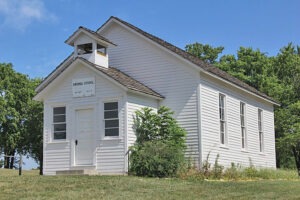
Virginia School in Shawnee, Kansas, by Jennifer Bhargava, courtesy Shawnee Dispatch.
After the Civil War, the population of Monticello Township swelled to almost 1,100 residents by the 1870s.
In 1869, the Atchison, Topeka & Santa Fe Railroad built tracks through the area, two miles east of the town, cauMonticello’sllo’s growth to immediately stagnate. The towns along the new rail tracks, including Holliday, Zarah, and Wilder, quickly drew residents and commerce away from Monticello. town’s own post office closed on January 4, 1871.
By the early 1900s, the original town plan had been abandoned. However, in 1910, the town contained two general stores, a blacksmith shop, a schoolhouse, about 15 houses, and about 60 inhabitants.
By the 1930s, the town included only one general store, the town hall, and a couple of shops. By the end of World War II, all that was left were houses and a school.
In the following years, Monticello Township remained largely rural and agricultural until development crept westward and housing began to replace rolling fields. In 1988, the township was divided and annexed by the communities of Lenexa, Shawnee, Bonner Springs, and Olathe.
However, the Monticello Community Historical Society, formed in 1988, preserves the township’s history. The society operates a museum that includes the history of the old towns of Monticello, Wilder, Holliday, Zarah, and Craig, and the historic sites of Chouteau Trading Post, the Virginia School, and the Union Cemetery. The museum, located at 23860 W 83rd Street in Lenexa, Kansas, is open by appointment (913-667-3706) only.
Monticello was located about nine miles north of Olathe in present-day western Shawnee and eastern Lenexa.
©Kathy Alexander/Legends of Kansas, updated August 2025.
Also See:
Extinct Towns of Johnson County
Sources:
Blackmar, Frank W.; Kansas: A Cyclopedia of State History, Vol I; Standard Publishing Company, Chicago, IL 1912.
Cutler, William G.; History of Kansas; A. T. Andreas, Chicago, IL, 1883.
Johnson County History
Johnson County History – 2
Johnson County History – 3
Monticello Community Historical Society
Shawnee Dispatch (dead link)

